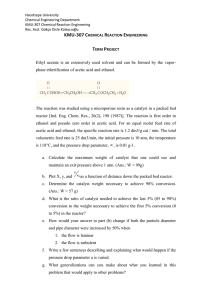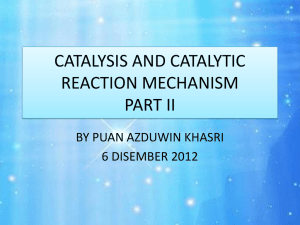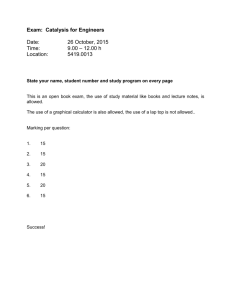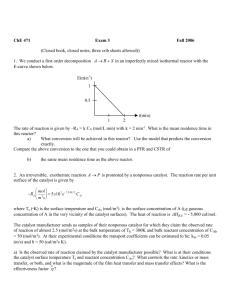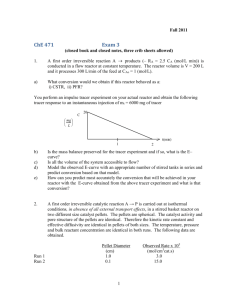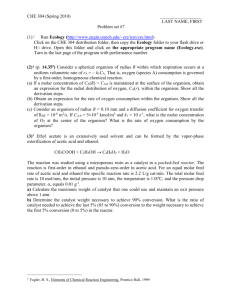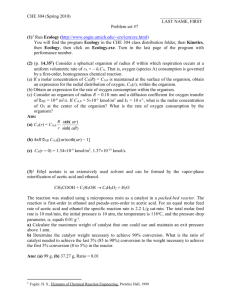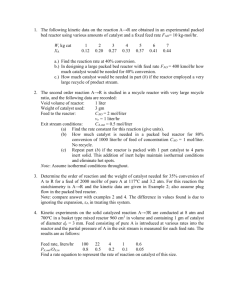Exam2_2_28
advertisement
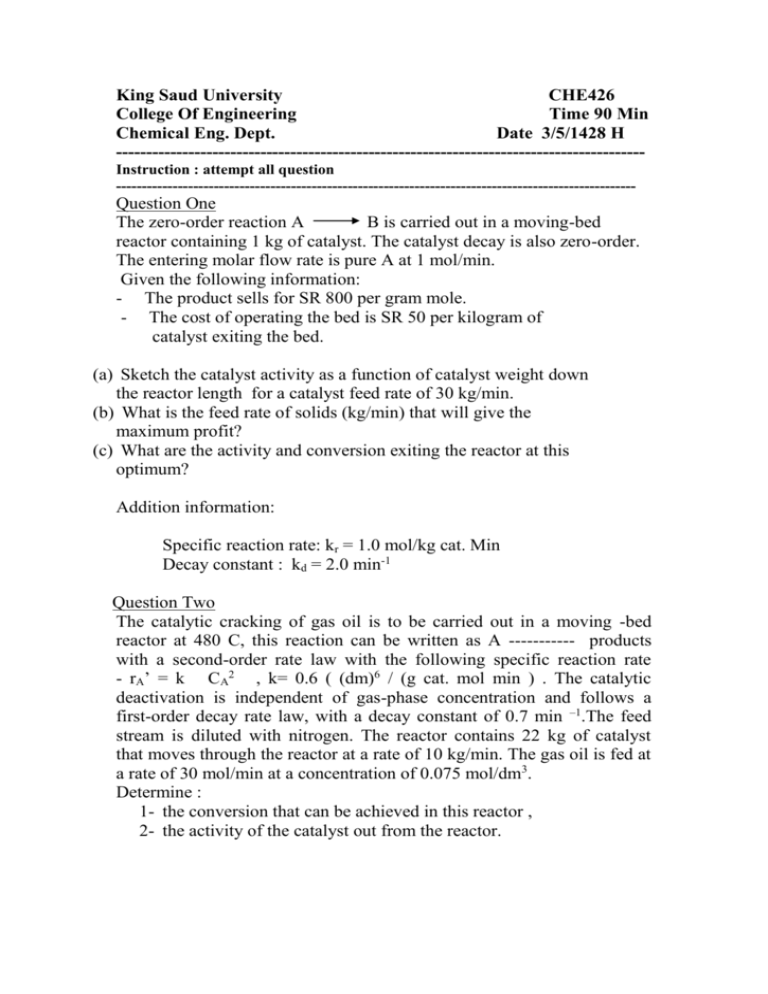
King Saud University CHE426 College Of Engineering Time 90 Min Chemical Eng. Dept. Date 3/5/1428 H ---------------------------------------------------------------------------------------Instruction : attempt all question ----------------------------------------------------------------------------------------------------- Question One The zero-order reaction A B is carried out in a moving-bed reactor containing 1 kg of catalyst. The catalyst decay is also zero-order. The entering molar flow rate is pure A at 1 mol/min. Given the following information: - The product sells for SR 800 per gram mole. - The cost of operating the bed is SR 50 per kilogram of catalyst exiting the bed. (a) Sketch the catalyst activity as a function of catalyst weight down the reactor length for a catalyst feed rate of 30 kg/min. (b) What is the feed rate of solids (kg/min) that will give the maximum profit? (c) What are the activity and conversion exiting the reactor at this optimum? Addition information: Specific reaction rate: kr = 1.0 mol/kg cat. Min Decay constant : kd = 2.0 min-1 Question Two The catalytic cracking of gas oil is to be carried out in a moving -bed reactor at 480 C, this reaction can be written as A ----------- products with a second-order rate law with the following specific reaction rate - rA’ = k CA2 , k= 0.6 ( (dm)6 / (g cat. mol min ) . The catalytic deactivation is independent of gas-phase concentration and follows a first-order decay rate law, with a decay constant of 0.7 min –1.The feed stream is diluted with nitrogen. The reactor contains 22 kg of catalyst that moves through the reactor at a rate of 10 kg/min. The gas oil is fed at a rate of 30 mol/min at a concentration of 0.075 mol/dm3. Determine : 1- the conversion that can be achieved in this reactor , 2- the activity of the catalyst out from the reactor. Question Three The reversible isomerization of compound A B is carried out over a supported metal catalyst in an isothermal fixed bed flow reactor. A and B are liquid, the equilibrium constant for the reaction is 8.5 at 350 ºF and 0.6 at 400 ºF. The catalyzed reaction is pseudo-firstorder in A. Side reaction have a negligible effect on yield, but they slowly deactivate the catalyst. 1- Derive an equation shows how the temperature of the catalyst reactor should be increased with time in order for the reaction rate to remain unchanged. 2- Determine the temperature-time trajectory (from 440 K to 480 K) to keep conversion constant in a CSTR if the catalyst decay is first-order, with a decay constant (kd) = 6.0 *10-3 hr-1 at 440 K. Activation energies for reaction and decay are 30 kcal/mol and 10 kcal/mol, respectively
